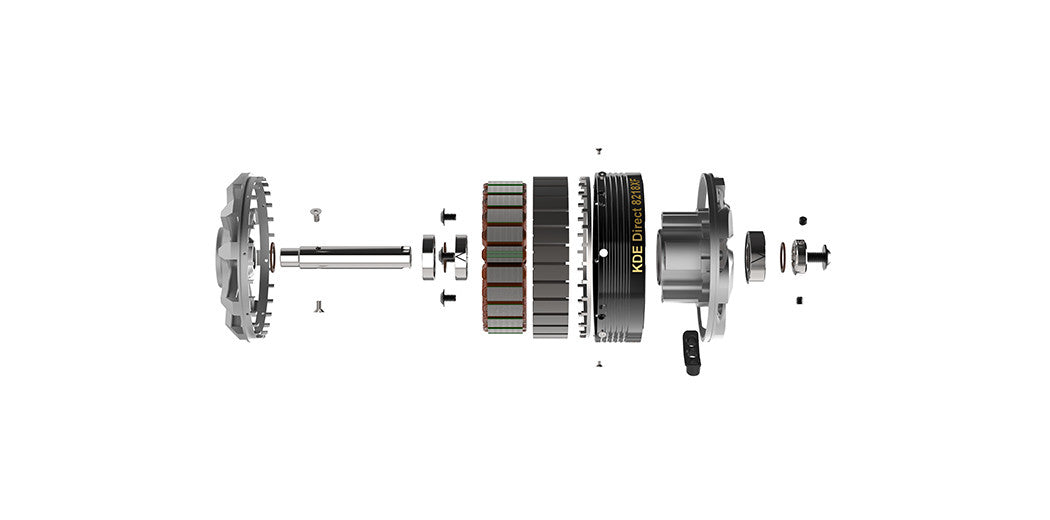Brushless Vs. Brushed Motors

The biggest difference between brushed and brushless motors, unsurprisingly, is the brush. But what does that really mean?
The principle behind the internal workings of brushed and brushless motors are otherwise much the same. When motor windings become energized, a temporary magnetic field is created to repel or attract permanent magnets. This magnetic force is converted to shaft rotation, allowing the motor to do work. As the shaft rotates, the electric current is routed to different sets of windings, maintaining electromotive repulsion or attraction, forcing the rotor to continually rotate.
The History of Brushed and Brushless Motors
Brushed DC motors have been used since 1856, and are still often used for electrical propulsion, cranes, paper machines and steel rolling mills. However, since their brushes wear down and require frequent replacement, brushless DC motors using electronic speed controller devices have displaced brushed motors for many applications. Brush wear became a significant drawback due to intense application demands and high-electric discharge noise (aka ESD, especially in aerospace applications), and a new motor was born.
Brushless motors are significantly newer and invented during the advent of electronics innovation. Advancements in solid state technology in the early 1960s resulted in the invention of the first brushless DC (BLDC) motor in 1962, what T.G. Wilson and P.H. Trickey called a “DC machine with solid state commutation.” The key element of the brushless motor is that it requires no physical commutator, making it the most popular choice for computer disk drives, robotics, and aircrafts.
Brushless Motor Advantages
Since brushless DC motors have no brushes to get worn out, they represent a huge leap forward in technology. Brushless motors have significantly higher efficiency and performance, and a lower susceptibility to mechanical wear than their brushed counterparts.
Brushless motors offer several other advantages, including:
- Higher torque to weight ratio
- Increased torque per watt of power input (increased efficiency)
- Increased reliability and lower maintenance requirements
- Reduced operational and mechanical noise
- Longer lifespan (no brush and commutator erosion)
- Elimination of ionizing sparks from the commutator (ESD)
- Near-elimination of electromagnetic interference (EMI)
Today’s Brushless Motors
Despite their reliability, the initial downside to early brushless motors was that they could not generate a great deal of power. When better permanent magnet materials became available in the 1980s, they enabled brushless motors to generate as much (or more) power as the previous brush motors on the market. In the late 80s, Robert E. Lordo built the first large-scale brushless DC motor with ten (10) times the power of the earlier brushless motors.
Today’s brushless motors solve many limitations of brushed motors by combining a higher output power, smaller size and weight, better heat dissipation and efficiency, wider operating speed ranges, and very low electrical noise operation. Brushless motors have no electrical contacts designed for wear, providing the greatest advantage in reliability and reduced maintenance intervals for commercial and industrial applications.
KDE Direct Brushless Motors
Designed and engineered in the United States, KDE Direct’s brushless motors provide best-in-class power, performance, and efficiency. From design redundancy standards and fail-safes to payload capacity and thrust performance, KDE Direct motors are engineered for longer flight times, higher efficiency and higher payloads that push the limits of today’s technology.
The KDE Direct UAS Multi-Rotor Brushless Motor Series presents high-quality and engineered motors specific for multi-rotor and UAS applications. The series was designed to provide market-leading performance and zero-vibration operation for hours of maintenance-free usage and market-leading performance.
Looking to build a new project? KDE Direct can help. Take a look at the KDE Direct UAS Multi-Rotor Brushless Motor Series or make a Custom Design Inquiry. For optimal selection of KDE Direct equipment, reference the Build Your System application.Share this post
- Tags: brushless motors, drone, history of motors, technology




